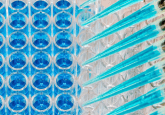LC–MS method used for the detection of caffeine in fingerprints

LC–MS method optimized to detect and quantify drugs with the hope of being used in criminal investigations.
A team of researchers from the National Research Institute of Police Science (Chiba, Japan) have optimized a method to quantify the amounts of caffeine and its metabolites in fingerprint samples. The team, led by Kenji Kuwayama, used an optimized LC–MS method to analyze fingerprint samples and, in doing so, collected and processed samples within 10 min.
Caffeine is metabolized in successive reactions and, therefore, produces several metabolites. The research team were looking to detect caffeine and/or its metabolites (theobromine, paraxanthine and theophylline) in secreted sweat on fingertips. The team measured analyte concentration prior to caffeine ingestion and after at 1, 3, 5 and 7 h. Prior to the collection of each sample, subjects washed hands using soap for a minimum of 10 sec, and subsequently soaked both index fingers in distilled water for a minimum of 10 sec to remove any contamination. Subjects dried hands using a clean towel and left hands in the open air for 30 sec to facilitate sweat production. Filter paper wetted with 50 μl of water was used as the collecting matrix for extracting analytes from fingerprints. Once sample preparation and LC–MS operating conditions were optimized, samples could be processed within 10 minutes.
Previous methods used to quantify drug concentrations have required blood or urine samples, and have utilized MS, infrared spectrometry and immunochemical approaches. The approaches have various drawbacks, such as poor efficiency and insensitive detection of analytes, denoted to sampling, pre-treatment of samples and poor detection sensitivity. Using fingerprints to detect and quantify drugs and/or their metabolites is, therefore, favorable over current methods due to greater sensitivity, non-invasive collection of samples and a shorter processing time.
The researchers plan to further this preliminary study by optimizing the method for other drugs and their metabolites, and in the use of criminal investigations.
Source: Kuwayama K, Tsujikawa K, Miyaguchi H, Kanamori T, Iwata Y, Inoue H. Time-course measurements of caffeine and its metabolites extracted from fingertips after coffee intake: a preliminary study for the detection of drugs from fingerprints. Anal. Bioanal. Chem. 405(12), 3945–3952 (2013).





